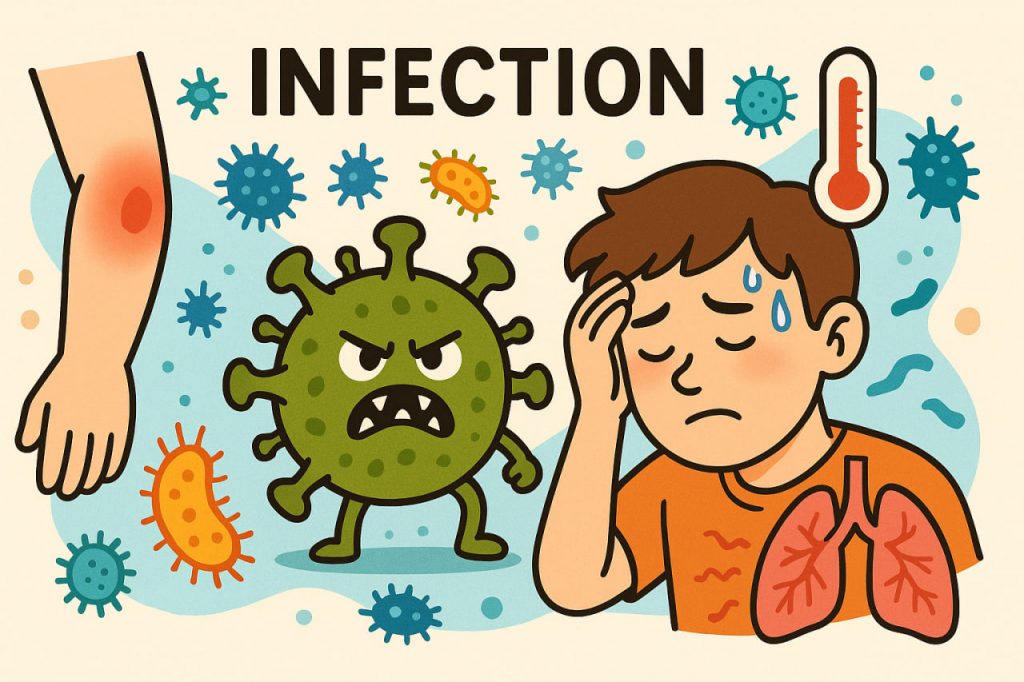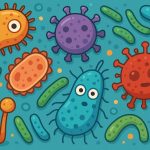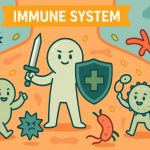An infection occurs when harmful microorganisms such as bacteria, viruses, fungi, or parasites enter the body and begin to multiply. These organisms may spread through direct contact, contaminated food and water, insect bites, or airborne particles. Once inside, they can damage tissues, release toxins, and disrupt normal body functions. The severity of infection depends on the type of pathogen, the strength of the immune system, and how quickly the condition is addressed. While some infections are mild and self-limiting, others can become life-threatening if not treated properly.
How the Immune System Responds
The human immune system plays a vital role in fighting infections. When pathogens invade, the body activates its defense mechanisms, such as white blood cells, antibodies, and inflammation. Fever often develops as the body tries to create an environment less favorable for microbes. Swelling, redness, and pain around the affected area are also common responses. This reaction is designed to contain and eliminate the invaders, but it may also cause discomfort. Understanding these processes helps explain why symptoms appear and how the body protects itself.
Different Types of Infections
Infections can be classified by the type of organism causing them. Bacterial infections often respond to antibiotics, while viral infections require supportive care and, in some cases, antiviral medication. Fungal infections usually affect skin, nails, or mucous membranes, while parasitic infections involve organisms living inside the host. Each type spreads differently, and prevention strategies vary. Recognizing the category of infection is important because treatment approaches are not the same. Self-medication is not advisable, and consulting a medical specialist ensures safe and effective care.
Prevention of Infections
Preventing infections is more effective than treating them. Key strategies include proper hand hygiene, safe food handling, and clean water consumption. Vaccinations are a critical tool against many serious infectious diseases. Using protective measures such as mosquito nets or masks reduces transmission risk in certain conditions. Healthy lifestyle habits, including balanced nutrition, sufficient sleep, and regular exercise, strengthen the immune system. Communities also benefit from public health policies that reduce the spread of infections, such as sanitation programs and awareness campaigns.
Risks of Untreated Infections
If left untreated, infections may spread to other parts of the body, causing complications. For example, a simple skin infection can lead to sepsis, a potentially life-threatening condition. Respiratory infections can progress into pneumonia, while untreated urinary tract infections may damage the kidneys. Chronic infections can weaken the immune system, making the body more vulnerable to other illnesses. This is why timely medical attention is crucial. Proper diagnosis ensures the right course of action and prevents long-term harm.
Modern Challenges of Infectious Diseases
In today’s world, infections remain a global challenge. The overuse of antibiotics has led to the rise of antibiotic resistance, making some bacterial infections harder to treat. Global travel allows pathogens to spread quickly across countries. Climate change influences the range of disease-carrying insects, increasing the risk of new outbreaks. At the same time, advances in medical science, vaccines, and hygiene have greatly reduced mortality from many diseases. Balancing prevention, innovation, and responsible use of medicine is key to controlling infections in the future.
Conclusion
Infections are natural interactions between humans and microorganisms, but their impact can be severe if ignored. Understanding their causes, symptoms, and prevention strategies empowers people to protect themselves and others. While the immune system is strong, medical guidance remains essential for proper care. By combining personal responsibility with public health measures, societies can reduce the risks of infectious diseases. Vigilance, awareness, and early action make the greatest difference in outcomes.
Glossary
- Infection – the invasion and multiplication of harmful microorganisms in the body.
- Microorganisms – tiny living organisms such as bacteria, viruses, fungi, and parasites.
- Immune system – the body’s defense network against pathogens.
- Pathogen – an organism capable of causing disease.
- Sepsis – a dangerous, body-wide inflammatory response to infection.
- Antibiotic resistance – when bacteria evolve to survive exposure to antibiotics.


